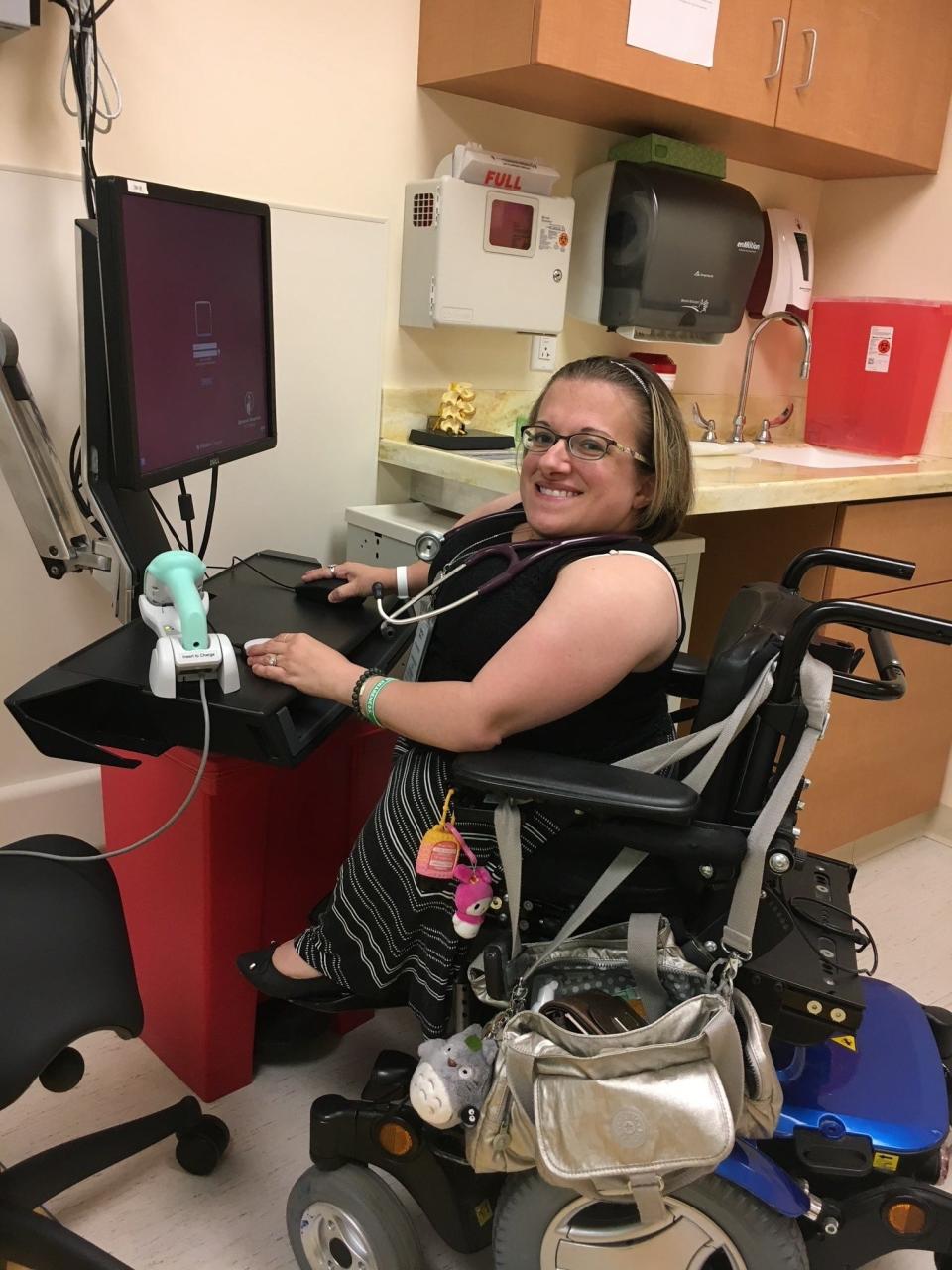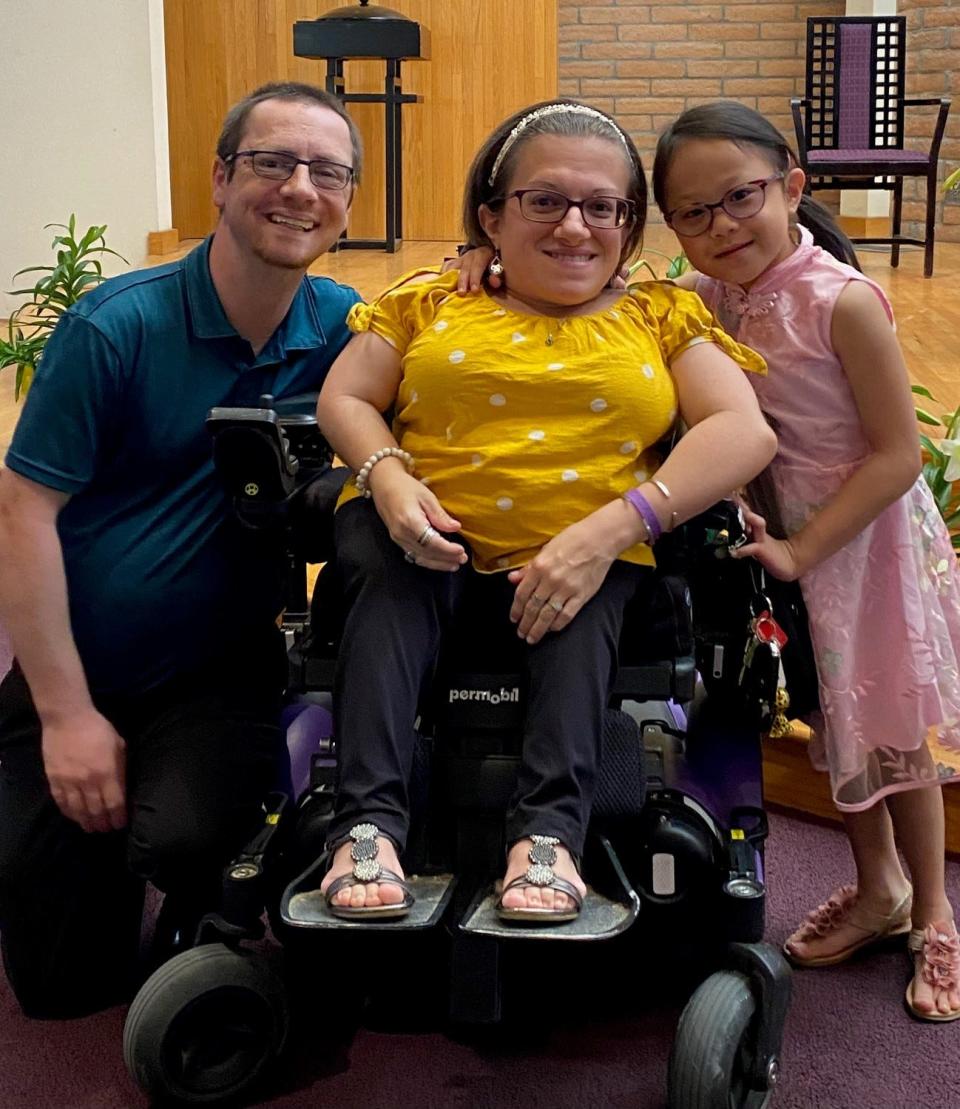This doctor is an expert in treating osteogenesis imperfecta. She also has it herself.
Maybe you heard about it after watching the Samuel L. Jackson movie "Unbreakable." Or maybe after binging Season 11 of "Grey's Anatomy." Or maybe the words "osteogenesis imperfecta," or "OI," don't mean anything to you.
To Dr. Pamela Smith, they mean everything. Not just because she's a well-educated, pediatric endocrinologist and metabolic bone disorder specialist at Phoenix Children’s Hospital. But because the 41-year-old physician has the disease herself.
Smith is medical director of the Metabolic Bone and Osteogenesis Imperfecta (OI) Clinic at Phoenix Children's, where in addition to her high-profile gig, she makes an effort to sit with families facing the same diagnosis offer informed, important advice. Even for someone knowledgeable, that task requires listening. "I start letting the family tell me what they want to know," she says. "Because that should guide our conversation, not what I think we should talk about."

What is osteogenesis imperfecta? What are the different types?
Osteogenesis imperfecta – also known as brittle bone disorder – is a genetic illness that affects fewer than 50,000 people in the U.S. It is a collagen condition that leads to weak bones and other associated complications like short stature, bone deformities and (many) fractures. The nitty gritty: Collagen in bone is supposed to create a scaffolding, like the kind you see outside a building. Minerals like calcium are like bricks that lay down the foundation of that building. When that scaffolding is abnormal, those bricks can't lay down well – hence the weak bones.
There are 22 different types but five main ones: Type I, II, III, IV and V – though they are not in any kind of order. Type I is the mildest (a few fractures in your lifetime) while Type II is the most severe (usually fatal within a few weeks after birth), according to Johns Hopkins Medicine. Types III and IV are moderate to severe (bone deformity, shorter height, etc.) – the kind that Smith has.
Signs and symptoms vary depending on types. In addition to broken bones, kids may have a triangle-shaped face, weak muscles or soft, discolored teeth.
Care has improved in conjunction with awareness. It's treated with a medicine called bisphosphonate aimed at maintaining a proper amount of bone building cells and reducing bone breakdown cells. It's not fixing the collagen problem but aids in bone density. Research into other medication options remains in the works.

'They rushed me to the emergency room'
Doctors didn't diagnose Smith with OI at birth, but at two months old, she began screaming abnormally. Something was very wrong. Her mom discovered her immobile in half her body.
"They rushed me to the emergency room, thinking I was paralyzed or something," she says. "And I had a broken arm and broken leg at two months old." The orthopedist on call, familiar with the disease, confirmed she had OI.
The hospital morphed into a second home. She was in and out so much for surgery after surgery to fix fractures or prevent future ones. She still has rods in her body from when she was 8 years old: "A lot of times the rods stay, as long as you don't outgrow them, and I didn't grow great."
OI care for adults, much like other inherited childhood disorders, is very difficult. "Once you age out and become an adult, it's very hard to find the same kind of care that you receive in a pediatric setting," she says.
Watch: This woman is living with terminal cancer. She's documenting her story on TikTok.
Disability and stigma in academics, medicine
Smith never thought she could be a doctor. Still, she loved anatomy, health and the human body so much that she decided to pursue a career in medical illustration. It wasn't until her junior year of undergrad when a fellow student asked if she'd consider going to medical school. Was it possible?
Representation matters – and Smith, a power wheelchair user, didn't have any. "I went home and I spent all night looking online for anybody who had a disability that was a doctor, like, is this a thing? Because I had never seen such a thing. And I had had a lot of doctors."
The next day, she asked her medical doctor instructor: "I was super nervous to ask her because I thought 'oh my God, she's going to think I'm crazy.' And I said, 'what do you think about me going to medical school?' And she said, 'yeah, why not?'" And the rest, well, you get it.
A key reason why she never saw herself as a physician? "I just didn't even think of myself as taking care of anything but being a patient." She was always the sick kid, always journeying to the ER, to surgery. Exhausted. Frustrated.
Even later when her bones stopped breaking so much, her self-perceptions (and everyone else's) stayed the same.
"I still felt like I was viewed as a patient," she says. "And I feel like I always will be viewed as a patient. Which is hard. When I go out, I feel like I'm viewed as someone that has medical needs. And that's what people see. That's natural. That is a barrier, though."
Important interview: Jamie-Lynn Sigler, multiple sclerosis and the wisdom she's picked up along the way
'So beyond excited to see me again'
Smith always knew she wanted to work with children with chronic conditions, and ultimately did dual training in endocrine and metabolic bone disease to treat the disease she lives with. One of her daughters has OI as well.
She helps families grapple with potential misunderstandings. If a child goes to an event like a birthday party and breaks a bone and doesn't tell anyone, for example, it's likely because they don't want to ruin the party and bring the focus to them and their illness.
Her experiences inform her care and provide relief in scary, sad moments for patients and their families.
One family she met during her fellowship at another hospital visited her OI clinic – evidently pleased with her approach. "This mom was so beyond excited to see me again," she says. "And she said that when I rolled in to the NICU, she knew it would be OK, which I thought was really sweet."
This article originally appeared on USA TODAY: Osteogenesis imperfecta, OI, brittle bone disease: What is it?

